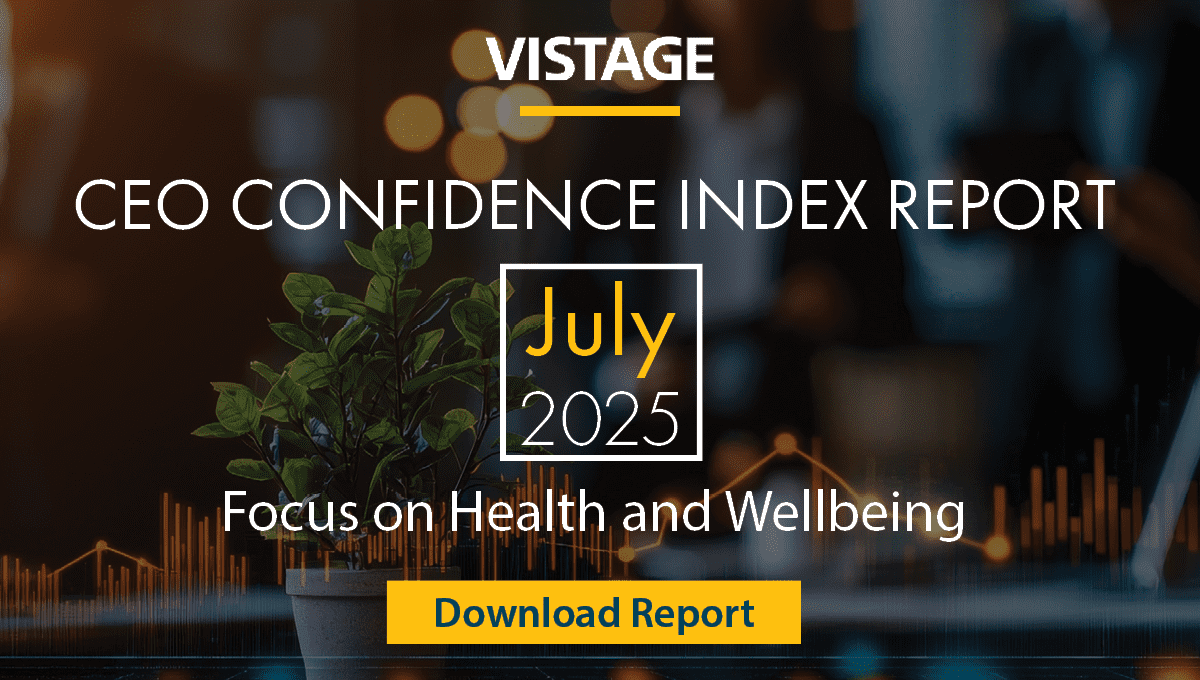You are here: Home / Leadership Insights / Leadership / Hybrid is here to stay — But needs refinement [Vistage CEO Index July 2025]

Hybrid is here to stay — But needs refinement [Vistage CEO Index July 2025]

As economic uncertainty and operational complexity continue to challenge business leaders, a quieter Nearly half of the reported workforce (about 49.6%) continues to operate fully in-office. This remains the most common arrangement, reflecting the enduring importance of on-site presence for many organisations—especially those in sectors requiring direct service delivery, manufacturing, or where hands-on oversight and collaboration are critical. However a substantial 39% demonstrates a significant shift toward hybrid models blending remote and in-office work. (see graph to be replaced at the end)
While flexibility remains a valued option for many teams, CEOs are increasingly focused on balancing that flexibility with performance, culture, and connection. The hybrid model is not inherently good or bad—but it requires intentional leadership, clear expectations, and the right structure to succeed.
Based on analysis of all CEO Confidence Index survey responses regarding current workforce arrangements, the average percentage allocations across all organisations are as follows:

CEO Insights
1. Prevalence of in-office models
Nearly half of the reported workforce (about 49.6%) continues to operate fully in-office. This remains the most common arrangement, reflecting the enduring importance of on-site presence—particularly in sectors where hands-on oversight, physical presence, or service delivery is essential.
“I’m not an advocate of WFH. I support this by exception… based on the ability and behaviour of the individual.”
2. Significant shift toward hybrid models
Approximately 39.1% of staff are in hybrid roles. Hybrid work has evolved into a mainstream solution, valued for:
- Greater flexibility for both employees and leaders
- Improved work-life balance
- Access to a broader and more diverse talent pool
- Less commuting, with increased capacity for deep-focus tasks
However, respondents consistently flagged challenges, particularly around:
- Collaboration and spontaneous problem-solving
- Onboarding complexity
- Maintaining strong culture and peer learning—especially for junior team members
“Spontaneous collaboration suffers immensely… and continuous improvement based on unstructured conversations also suffers.”
“Onboarding is a touch more complex.”
Some organisations are refining their approach by increasing in-office expectations for leaders in an effort to set cultural tone and encourage greater team engagement.
“Moving our leaders to 4 days in / 1 day WFH. All other employees remain on 3 days in / 2 days WFH.”
3. Low but meaningful fully remote share
Fully remote roles account for about 10.6% of the workforce. This model tends to be limited to specific job functions or organisations intentionally designed for remote work. Leaders noted:
- Productivity can increase for highly self-motivated individuals
- Challenges remain around performance oversight, maintaining culture, and ensuring accountability
“The flexibility makes for a happier team. Some are more productive and others significantly less productive.”
4. Notable Variance Across Sectors and Roles
While these averages provide an overall picture, individual organisations report wide variation in their workforce configurations—from fully in-office to fully remote. The most common theme is cautious adaptation, with most CEOs indicating stability in their current model for the next 12 months.
Summary
The CEO Confidence Index reveals a clear preference for hybrid working, with nearly 40% of workforces already adopting this model. While hybrid and flexible working arrangements offer compelling benefits—particularly in talent attraction, productivity, and wellbeing—they require continued refinement. Organisations that intentionally address the culture, capability-building, and operational systems required to support hybrid success will be better positioned to thrive.
CEO Confidence Index – July 2025 Report
The Vistage CEO Confidence index surveys small to mid-sized business CEOs and owners across Australia. The latest index results reveals the economic challenges facing Australian businesses with a focus on the workforce.




